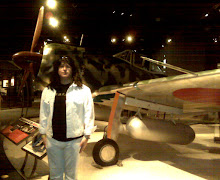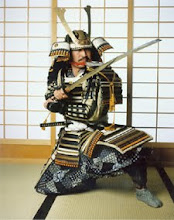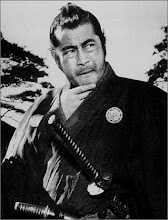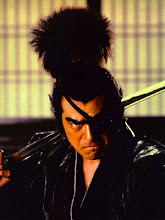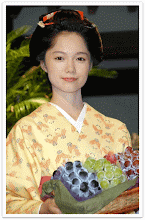The Bakumatsu Period of Japan – The Last days of the Tokugawa Shogunate has made for great fodder for film makers seeking to tell the tales of Japan's turbulent series of dramatic historical events that took place during the nineteenth century. In such, 2010 Toei Company's Sakuradamon no gai hen is no exception. Better known here as The Sakurada Gate Incident Japanese Film Director Jun'ya Sato takes up the difficult task of recreating the events that set the stage for revolution and the ultimate goal of Imperial Restoration.
This story centers around a Mito-han Samurai who had just come out from being under confinement named Seki Tetsunosuke (played by Osawa Takao) is has joined a plot by other Mito Clansmen to assassinate the Tairo or Great Elder Ii Naosuke (played by Ibu Masato) who in the aloof Shogun Iesada's absence or interest in government affairs has signed treaties without Imperial Consent with the American Consul Townsend Harris in the Treaty of Amity & Commerce in order to head off Japan's most imminent threat to Japan that has sent the county into crisis.
Being fully aware of Japan's ineffective coastal defenses, the Bakufu makes these decisions to bide time while they devise a strategy to deal with the threat poised by the black ships of the western powers. Having committing the crime of violating the Mikado's law (Emperor Komei) the Mito han informed the Imperial Court and sought sanction. An Imperial Writ from the Mikado was given directly by the court to the Mito breaking the protocol which angered the Bakufu in Edo. This resulted in the Ansei Purge – Ii Naosuke's reign of terror that resulted in over 100 arrests and eight executions of those who opposed Ii's actions which forces the hand of the Mito to take action.
Aware of such plots and dire warnings of threats to his life, Ii Naosuke chooses to ignore them at his peril by not increasing the number of his guard. "The Bakufu sets the number."
One a cold morning of March 1860 the assassination is carried out in front of the Sakurada Gate of Edo Castle in a bloody sword battle that resulted in the death of Ii Naosuke. It is truly a brutal yet exhilarating scene and the highlight of this film depicting realistic sword action in the most ugly violent of terms.
While Seki Tetsunosuke is merely tasked to record and confirm the Tairo's death, his battle for survival in the face of betrayal by other Han who had pledged to support their cause of Sonno Joi must be overcome. While their timing was not supported by Sakamoto Ryoma, it is up to Seki to live long enough to see the fruit of the Mito's actions and those who died as a result were not in vain.
Now we have read other bloggers take on this film many of which universally loathed it's slow pace and difficult action. If you are looking to compare this to 13 Assassins, you are going to be disappointed and perhaps by billing this as an action film is in error. In contrast, if you love the history of the Bakumatsu period this is worth viewing. We appreciate that each member of the Mito plot was listed with their ages at the time of death.
In one such poignant scene we see a father and son cornered by the Magistrates in Osaka. In their attempt to escape, the father jumps from the second story of a Ryokan and injures his leg making escape impossible. With no way out and swords drawn, he limps over to a nearby Buddhist Temple and asks as a warrior to be given use of a room so he may die like a Samurai.
Minutes later, both the father and his 19 year old son are tragically found dead atop blood soaked tatami mat. But the tragic consequences doesn't end there.
For many of the captured plotters, those associated with the Mito, and those charged with failing to protect the Tairo, such dignity is denied as they are led out to be beheaded. It's scenes like this I believe many viewers who tune out after the first thirty minutes miss out.
Telling such a complex tale of this nature is never an easy task. Just ask the makers of Kon Ichikawa's 47 Ronin. The 47th NHK Taiga Drama Atsuhime tried to tell the story of Ii Naosuke & the Ansei Purge in the span of two months where director Jun'ya Sato accomplishes this in just a little over two hours. We will concede, at times this film's pacing seems flat and its most exciting scene is the assassination itself. The real story in our minds from moment one should have been solely on what happens to Seki as he tries to evade the Bakufu Magistrates pursuing him. With wanted posters circulated everywhere and no place to go, he will be challenged by swordsman and anyone who fails to protect him. Anyone who loves good fugitive movies can appreciate where this film took in the second hour. To us that was the real story behind these tragic events that cost the lives of anyone connected to him. While some features may look familiar to Samurai Assassin, and it's second hour flies through like Toshiro Mifune's Shinsengumi, this film will challenge if not educate audiences and history buffs alike. While some people may find the first hour uninspiring, the overall film with it's lighting, set design, costume, great cast, and locations makes the grade. Anyone looking to write a paper of the Ansei Purge or that of the Mito Han would be remiss to pass on this film. It very well may change your view of the Mito Samurai who died doing what they believed was in the best interest to save Japan.
While history can be entertaining, this is not mere entertainment. This
is an important film conceived by people of the former Mito domain
containing serious drama not for the light hearted or easy action oriented.
It is both a tragic tale and one of the most important events of a
turbulent time that forever changed the course of Japan's future. As
said in closing scenes during the Surrender of Edo Castle, Saigo
Takamori of Satsuma seen in command of the newly formed Imperial Army
says: “It all started here.”
To find a copy of The Sakurada Gate
Incident with good English Subtitles please visit our good tomodachi
Eddie @
Japanesesamuraidvd.com




































